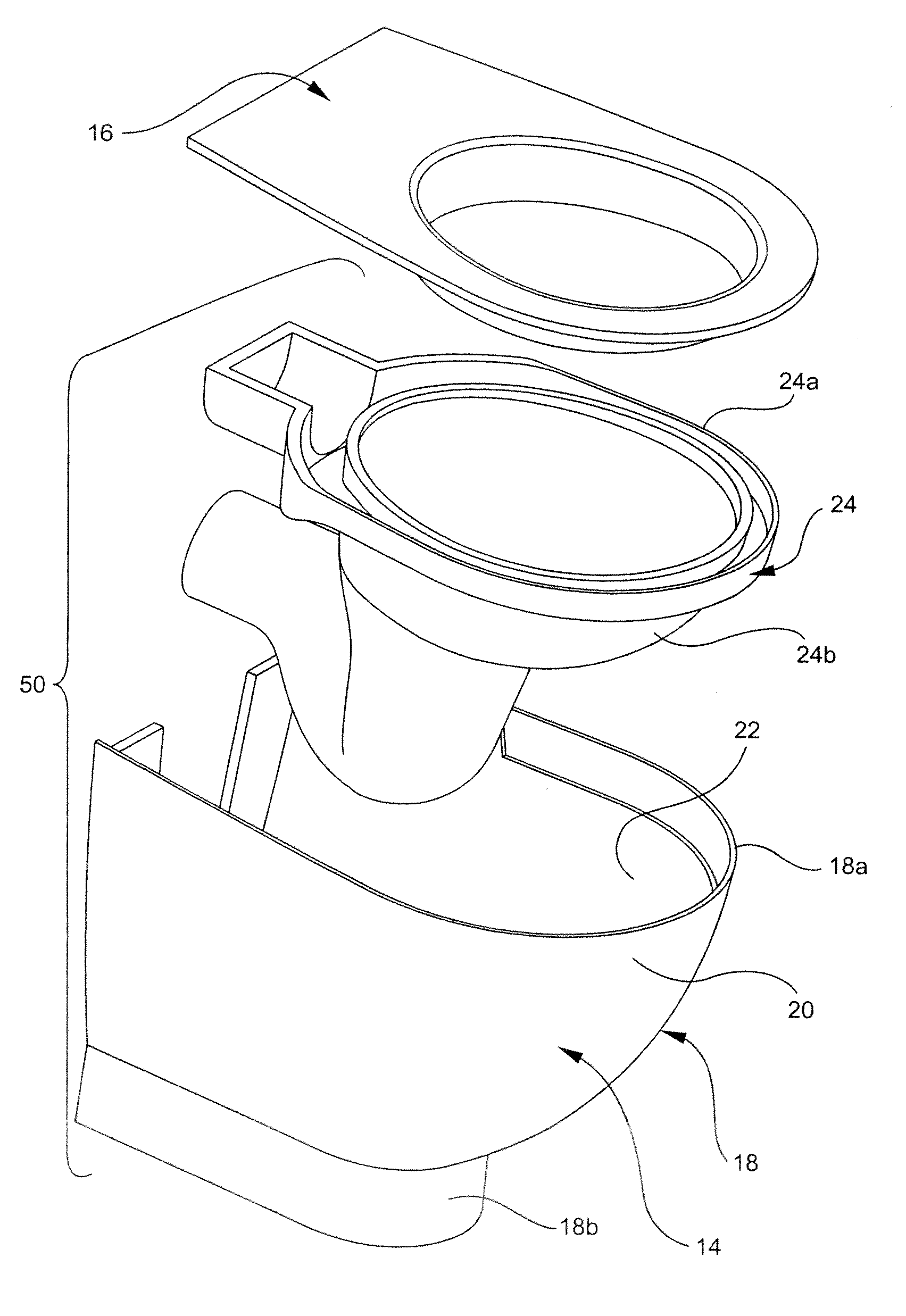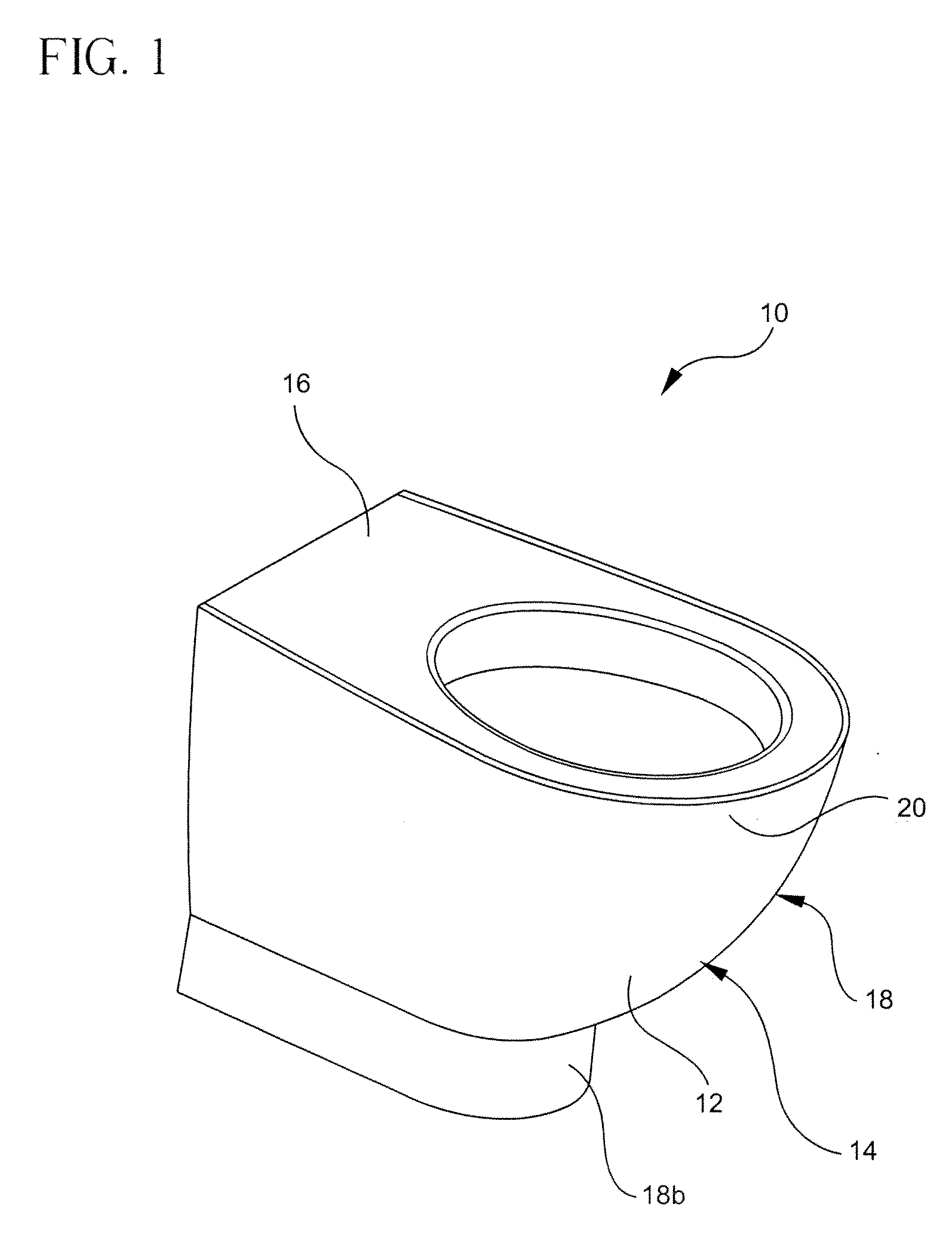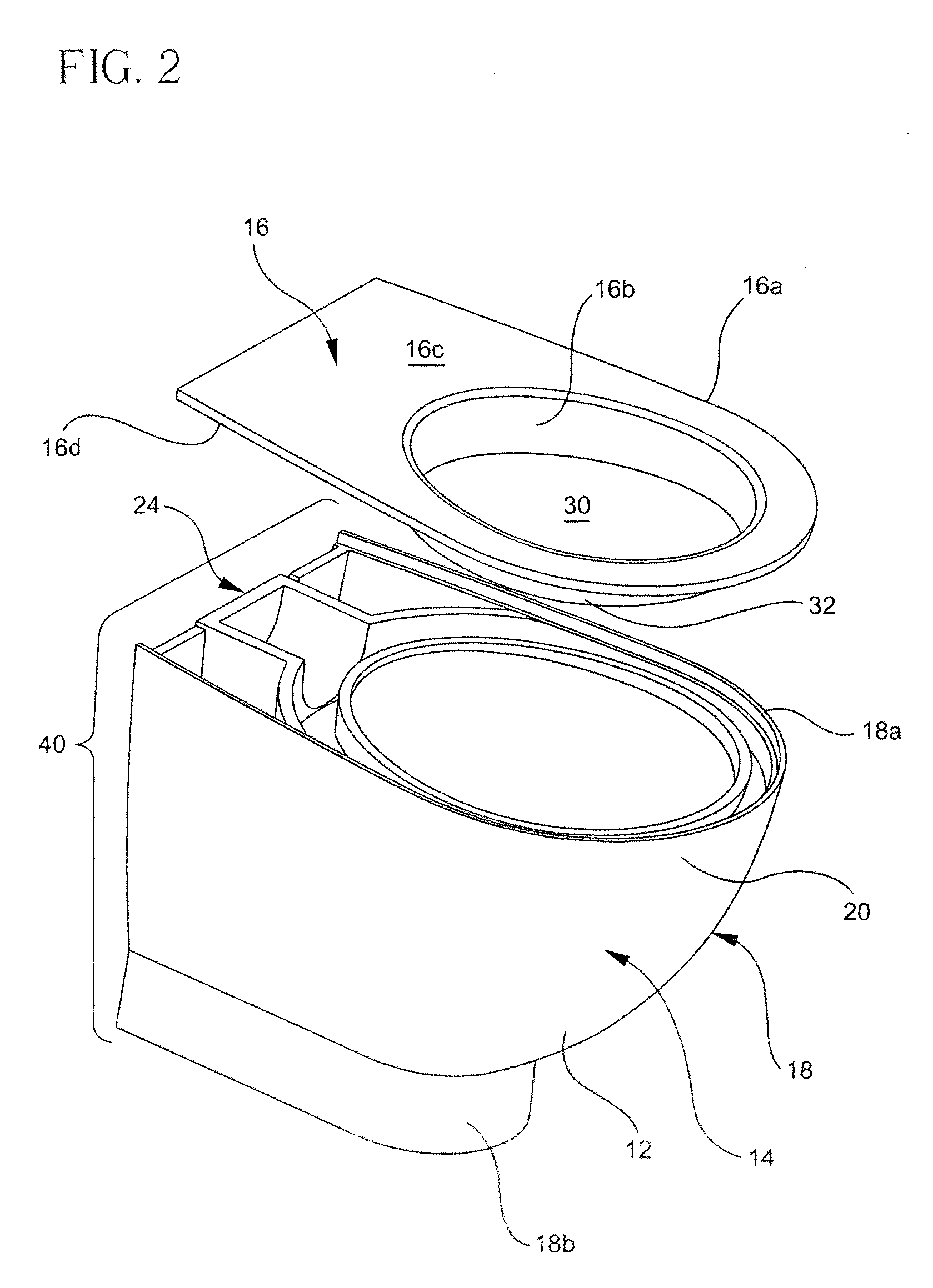System and Method for Casting Toilet Bowls
a technology for toilet bowls and molds, applied in the field of improved toilet bowl systems, can solve the problems of ensuring costly reliance on mold manufacturers to modify molds, affecting the performance of toilets, and reducing the service life of toilets, so as to improve the service life and improve the service life. the effect of the quality of the toilet, enhancing consumer choices, and preserving the performance of the toil
- Summary
- Abstract
- Description
- Claims
- Application Information
AI Technical Summary
Benefits of technology
Problems solved by technology
Method used
Image
Examples
Embodiment Construction
[0045] The casting method of the present invention and a sanitary product obtained thereby are described with reference to the figures, wherein like reference numerals identify like elements.
[0046] Referring to FIG. 1, a finished one-piece toilet 10 is shown having a bowl 12 with a generally curved exterior surface 14 that supports a rim 16 integral therewith. Toilet 10 is produced from three primary components that are separately cast and subsequently assembled and fired to produce an integral piece of sanitaryware. Additional components may be cast as desired to achieve additional desired aesthetic appearances and structural integrity, although such additional components are not necessary for the successful performance of the present inventive method. One or more of the components may be treated with anti-bacterial, biocidal, deodorant, odor suppressing, anti-viral and / or algicidal agents to provide the finished toilet with enhanced hygienic properties.
[0047] Referring further t...
PUM
| Property | Measurement | Unit |
|---|---|---|
| color | aaaaa | aaaaa |
| stability | aaaaa | aaaaa |
| density | aaaaa | aaaaa |
Abstract
Description
Claims
Application Information
 Login to View More
Login to View More - R&D
- Intellectual Property
- Life Sciences
- Materials
- Tech Scout
- Unparalleled Data Quality
- Higher Quality Content
- 60% Fewer Hallucinations
Browse by: Latest US Patents, China's latest patents, Technical Efficacy Thesaurus, Application Domain, Technology Topic, Popular Technical Reports.
© 2025 PatSnap. All rights reserved.Legal|Privacy policy|Modern Slavery Act Transparency Statement|Sitemap|About US| Contact US: help@patsnap.com



